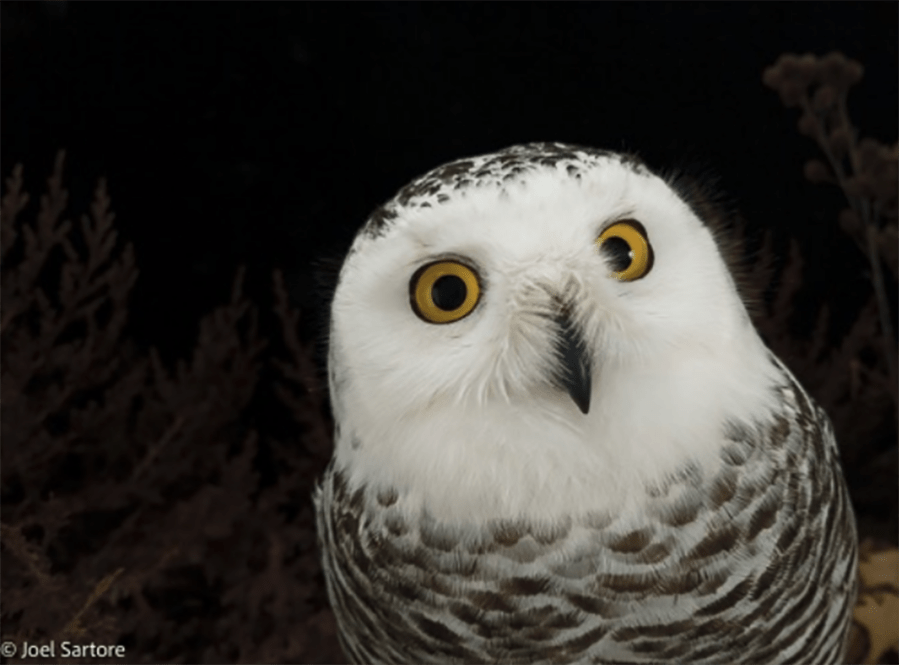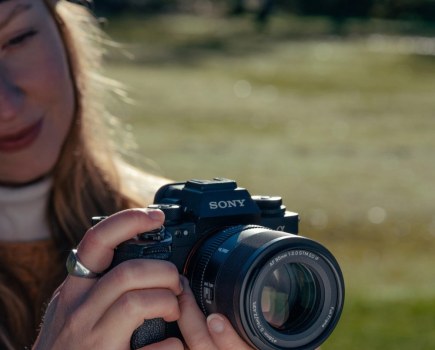In partnership with OPPO
As one of the world’s biggest smartphone makers, OPPO has a strong commitment to ensuring the best-possible colour performance from its phones – after all, without colour, our experience of the world would be very different and far less enriching.
As well as technological innovation, such as the recent partnership with iconic camera maker Hasselblad, OPPO has also been helping to protect colour in the natural world through its Endangered Colour campaign.
This involves supporting the National Geographic Society and its wildlife conservation efforts, while also commissioning National Geographic photographer, Joel Sartore, to take photos and video on OPPO phones.
The latest part of the campaign is Endangered Colour After Dark, where Joel captured a library of images and short films of endangered and at risk nocturnal animals in wildlife sanctuaries – giving the viewer a new understanding of life at night.
We caught up with Joel to find out more about Endangered Colour After Dark, and to get some of his expert tips for taking great phone pictures of animals at night.

Fennec fox. Image taken by Joel Sartore
Passionate about conservation
“I describe myself as a conservation photographer,” Joel explains by way of introduction. “I’ve been working on a project called the National Geographic Photo Ark for almost 16 years, photographing animals big or small, rare or common, and we’ve now included more than 12,000 species. The point is to try and get people to understand that as nature goes away, so could we. It’s very important to save all animals – from ants to elephants.”
Joel’s passion for raising awareness of endangered species made him a perfect fit for OPPO’s Endangered Colour and Endangered Colour After Dark campaigns. “Any time anyone wants to talk about endangered species and photographing rare species, day or night, I’m in. All I’m interested in, pretty much since I was a boy, is how to keep species from going extinct.”

Snowy Owl. Image taken by Joel Sartore.
Raising awareness
For Joel, helping to achieve this vital goal is all about raising public awareness.
“Public education, getting people to meet these species and see that they’re wonderful – that’s my best hope for seeing us start to preserve habitats around the globe. It all starts with awareness. People might fall in love with an image of a ringtail lemur, or a pygmy hippo, for example; maybe that’s the gateway that gets them into the tent of conservation forever.”
We live in an image-saturated age, but Joel’s convinced that photography remains a powerful tool to help conservation efforts and raise awareness. “Is a photograph powerful enough to change public opinion, to engage people, and to get them to see the world in a new way and think differently about how they behave? I think the answer is a solid ‘yes.’ When we see a picture, and we’re able to look an animal in the eye — as primates ourselves — there’s a very strong reaction there… maybe we’ll come away inspired, thinking all animals have a basic right to exist and thinking about what we can do to help.”
All animals are amazing
Joel routinely uses a smartphone for photography outside of the National Geographic Photo Ark project. For OPPO’s Endangered Colour After Dark campaign, he travelled across the USA to photograph a wide variety of species using the OPPO Find X5 Pro. Did he have any favourite subjects?
“They’re all amazing to me, all of them count,” he explains, “but one of my favourites, oddly enough, is the porcupine. How in the world does that thing manage? How did the spines grow out of it? How do they stay alive, just in terms of having poor eyesight, being so low to the ground?”
He also enthuses about the Malayan tapir that’s half white and half black, and the pygmy hippo that weighs hundreds of pounds but can move easily through water.
“But I can’t pick just one animal. They’re all just amazing in their own ways, honed over thousands or hundreds of thousands of years, and great in their own environments – provided that we give them some space and leave them alone. We have to give animals habitats so they can go forward into the future. Without habitat, all is lost. That’s why we want to do campaigns like Endangered Colour After Dark, to raise awareness that our actions do matter.”
So what creatures are particularly hard to photograph? “Animals that live underground are really tough, or those that live too high up in trees,” notes Joel. “Animals that are jet black against a black background are also tough unless you figure out a way to have white light edging around them. A lot of animals live in muddy water or in leaf litter, or up on the tops of mountains. These are animals that are really hard to see because they’re small and secretive.”
Working with available light
Photographing animals in low-light environments requires a carefully considered approach. “When you photograph after dark, don’t be in complete darkness,” Joel explains. “You need some light to be able to compose your picture, know where the animal is, and render a bit of colour in the landscape. Fortunately, that’s pretty easy to do in our modern world. It seems like there’s always man-made light coming in here and there, and there’s moonlight.”
Shooting at dawn and dusk is a particularly good idea, according to Joel. “The light levels are still very low, but there’s still a real vibration in the air in terms of the colour wavelength and the richness of the colours. You really do want to get a little bit of light somehow on the landscape. Working at the edge of day and night is a great way to go about that.”
Joel is adamant that whether you’re using a phone or a DSLR, you need some light to be able to see what you’re doing – “so you don’t trip and fall down, so you see where the animal is and whether they are looking at you. I always prefer eye contact. It makes for a more interesting picture.” He also notes that less light also raises the chance of data loss caused by digital noise, so the higher the ISO setting you’re going to need.

Amazon milk frog. Image taken by Joel Sartore
Don’t rely on software
A wide range of editing software for stills and video is now available, but Joel is adamant that you should never rely on ‘post production’ – he believes the best results come from being mindful during the photography process.
“In truth, I’m not a big fan of post production, but I’m a really big fan of ‘seeing’ well,” he explains. “Most people don’t realise that it’s all about editing in your head before you shoot. Are you close enough to the animal? Is the scene lit to the point where you think it looks beautiful? And then it takes experimentation. Just moonlight could look beautiful, or light coming in through a blue skylight. Or man-made lights that a zoo has on to partly illuminate a space after dark, so the keepers can see to feed the animals. All these things can give you that little bit of edge. Also, wildlife photography takes a lot of patience – the best pictures usually come right at the end.”
Joel also stresses that your images need to be engaging. “I’ve been sent so many pictures over the years that just aren’t interesting enough. If you want your pictures to be more interesting, stand in front of more interesting stuff – that is a really good rule of thumb!”

Ring-tailed lemur. Image taken by Joel Sartore
Best places to take photos
Being unable to photograph nocturnal species in their exotic natural habitats shouldn’t be seen as a drawback. Joel’s biggest tip for wildlife photography fans is to work with animals that are used to people. “Good zoos, wildlife sanctuaries, public aquariums – those are all great. Work in places where the animals are not going to be stressed by your presence. If an animal is born and raised in human care, and people can see it routinely, those animals are used to being photographed, and they’re used to looking at us. It’s just a much easier way to go in terms of limiting stress on animals.”
Once you have found a suitable location, Joel’s advice is to look around, and work out how to make the most of the scene and, of course, the ambient light. “You must be thoughtful and patient. Eventually, people and animals will do something interesting. Settle in and don’t be in a rush.”
It’s also important to try and get multiple chances to photograph animals, with extended time and access, in order to get them at their best. “One fleeting glance is not going to make a very good picture,” Joel explains. “You need to be around animals that are comfortable, thriving, and sleeping or feeding, just to give you better opportunities throughout the day and into the evening.”
Lots we can do
It’s easy to get overwhelmed by negative messages surrounding endangered species and loss of habitat, but Joel believes there is still a lot we can do to make a difference.
“I would like people to realise their consumer choices really matter. How much meat do you eat? That takes lot of energy, a lot of chemistry, a lot of water. Do you ride public transport or do you drive a small car? Has your home been insulated well? That saves you from paying much higher energy bills, and keeps carbon from being spilled out into the atmosphere. Do you encourage people to avoid pouring chemicals on their lawns, which kills pollinating insects? Do you plant a pollinator garden in your yard, to help native insects?”
“These are all things we can do, just as a matter of our daily lives. It all starts in your own backyard. People can always go to my website and look at the Frequently Asked Questions page. There are lots of ideas there, which can work anywhere in the world.”
Further reading
True colours: OPPO and Hasselblad team up







